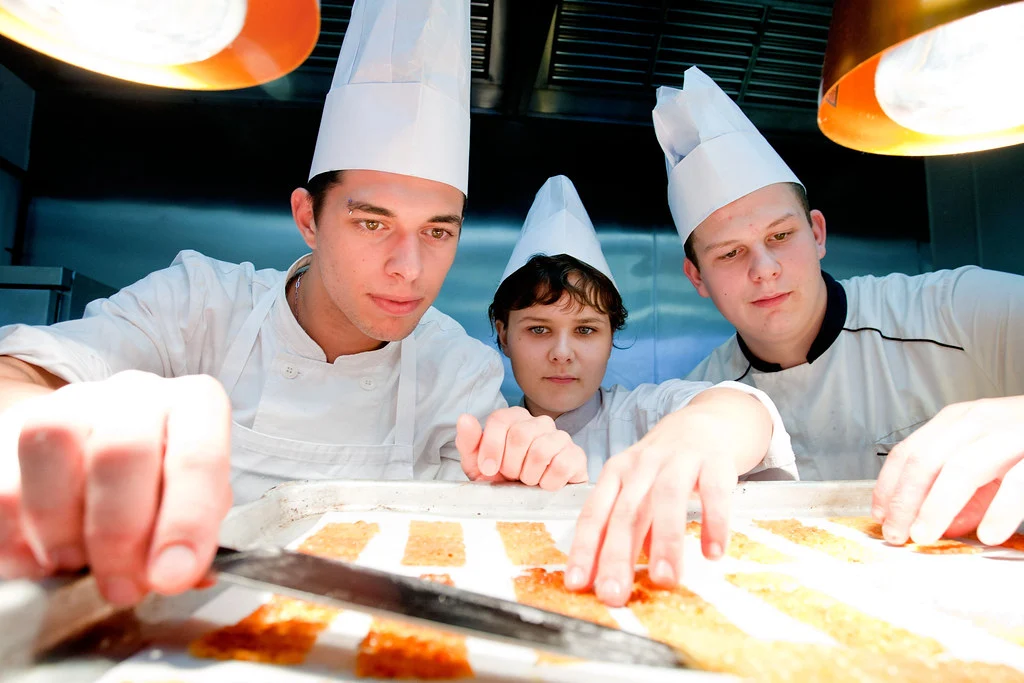Cooking French cuisine may appear intimidating, but fear not! This step-by-step guide will take you through the basics of French cooking and make it accessible to those new to the cuisine.

Get ready to embark on a culinary journey full of delicious flavors and easy to learn techniques.
1. Setting Up Your French Kitchen
Creating a conducive cooking environment is the first step. Equip your kitchen with essential tools such as a chef's knife, cutting board, and a sturdy set of pots and pans.
Invest in quality ingredients, as they form the foundation of French cooking. Fresh herbs, olive oil, and a variety of cheeses will become your best allies in the kitchen.
2. Mastering the French Mother Sauces
French cuisine revolves around five mother sauces: Béchamel, Velouté, Espagnole, Sauce Tomat, and Hollandaise.
These sauces serve as the building blocks for countless dishes. Learning to create these sauces opens the door to a multitude of classic French recipes.
3. Perfecting the Art of Sautéing
Sautéing is a quintessential French cooking technique that involves cooking food quickly in a small amount of fat over medium-high heat.
This method is employed to preserve the natural flavors, textures, and nutritional value of ingredients, making it a cornerstone of French culinary excellence.

-
Choosing the Right Pan and Oil: To start your sautéing adventure,
select a quality sauté pan with a wide bottom and low sides. This design
allows for proper heat distribution and encourages evaporation. Opt for oils
with a high smoke point, such as olive oil, butter, or grapeseed oil, to
prevent the development of undesirable flavors.
-
Preparing Ingredients: Before you begin sautéing, ensure that your
ingredients are dry to promote proper browning. Cut vegetables and proteins
into uniform sizes to ensure even cooking. This attention to detail will
contribute to the visual appeal of your dishes.
-
Achieving the Perfect Sear: The key to successful sautéing lies in
achieving a golden-brown sear on your ingredients. Heat the pan thoroughly
before adding the oil, then introduce your ingredients in a single layer.
Avoid overcrowding the pan, as this can lead to steaming rather than
searing.
-
Mastering the Toss: To evenly cook your ingredients, master the
tossing technique. Use a gentle flick of the wrist to flip and stir the
contents of the pan. This not only ensures uniform cooking but also adds a
touch of flair to your culinary performance.
-
Adding Aromatics at the Right Time: Elevate the flavors of your
sautéed dishes by adding aromatic ingredients like garlic, onions, or fresh
herbs at the right moment. Introducing them too early may lead to burning,
while adding them too late may result in a raw taste.
-
Deglazing for Flavor: After sautéing proteins, deglaze the pan by
adding a liquid such as wine, broth, or vinegar. This process loosens the
flavorful browned bits stuck to the bottom of the pan, creating a rich and
savory foundation for sauces.
- Experimenting with Sautéed Dishes: Sautéing opens the door to a variety of French dishes, from the classic coq au vin to the ever-popular ratatouille. Experiment with different ingredients and flavor combinations to discover your own signature sautéed creations.
Mastering the art of sautéing is a skill that will not only elevate your French cooking but also empower you to create delicious, well-balanced dishes with ease.
4. Embracing French Baking
No exploration of French cuisine is complete without delving into the world of French baking. Learn to make the perfect baguette, master the art of flaky croissants, and indulge in the simplicity of a classic tarte tatin.
Baking is not just a skill; it's a delightful experience that will elevate your culinary repertoire.
5. The Importance of Wine Pairing
French cuisine and wine go hand in hand. Understanding the basics of wine pairing will enhance your overall dining experience.
Red wines complement heartier dishes, while whites are ideal for lighter fare. The right wine can elevate the flavors of a dish, creating a harmonious balance on your palate.
Conclusion
The start of your French cooking journey may seem daunting, but with these basic steps you will be well on your way to mastering the art of French cuisine.
Remember, patience and practice are key. You will discover the joy and satisfaction of creating authentic French dishes in your own kitchen as you hone your skills. Enjoy cooking!

Post a Comment